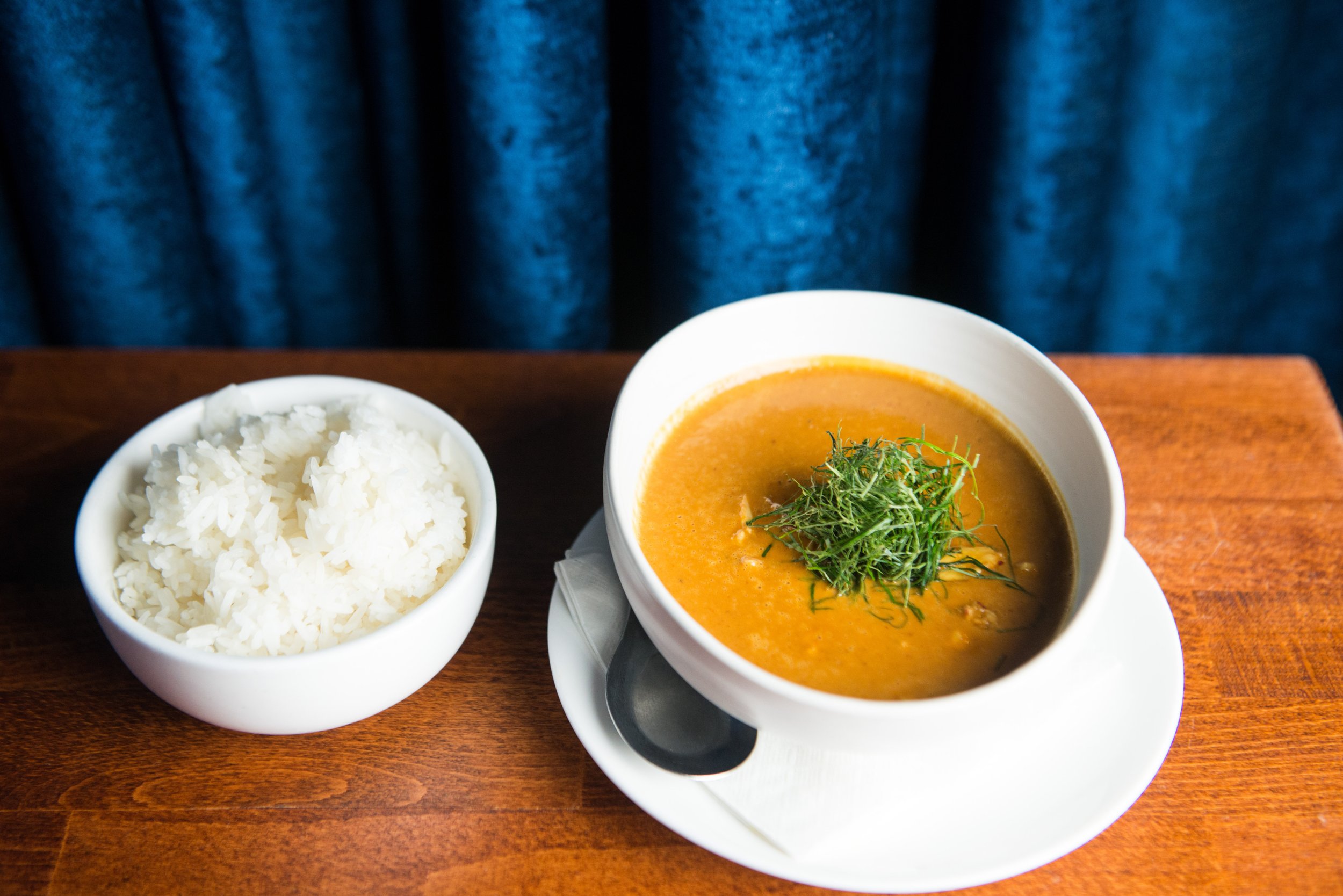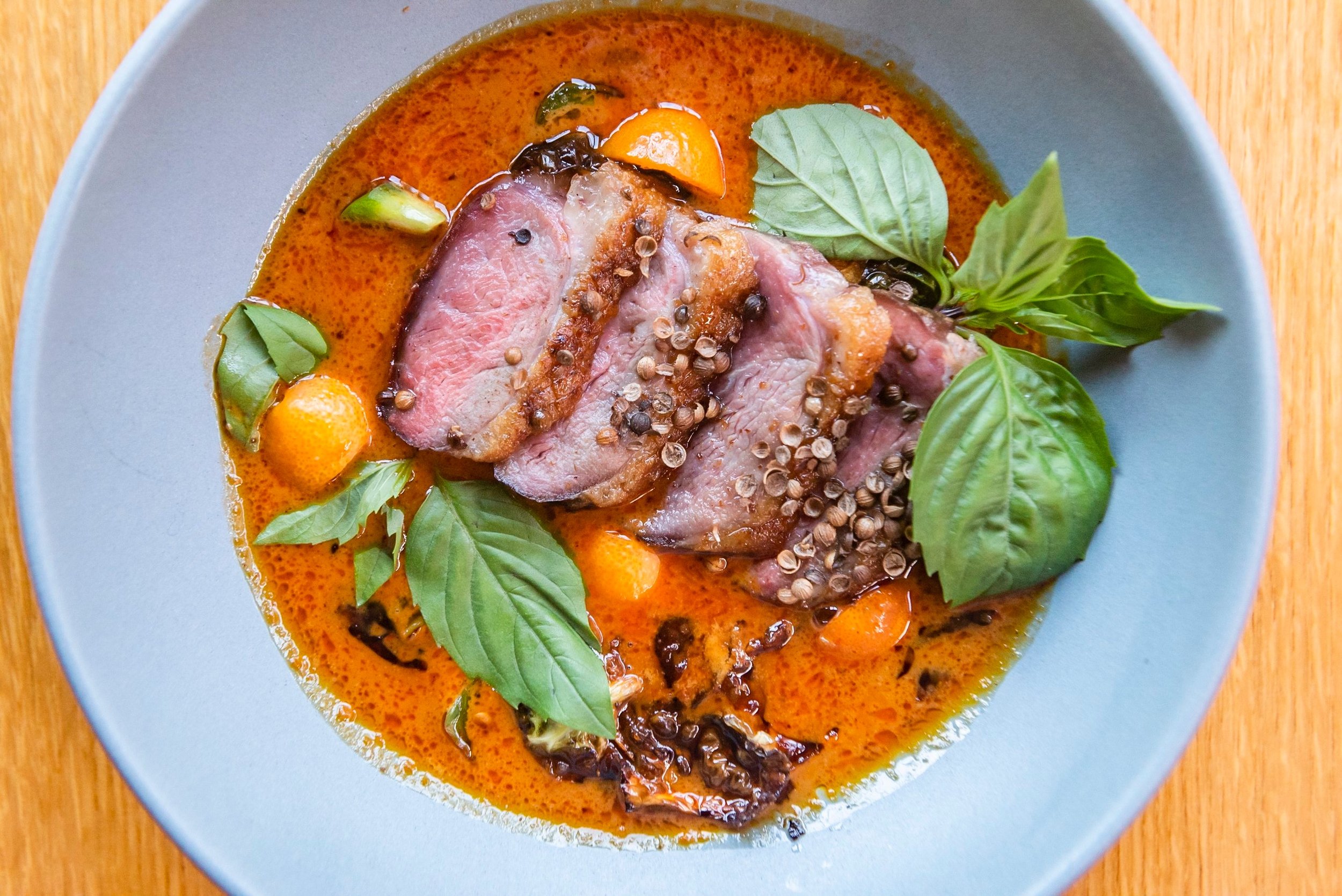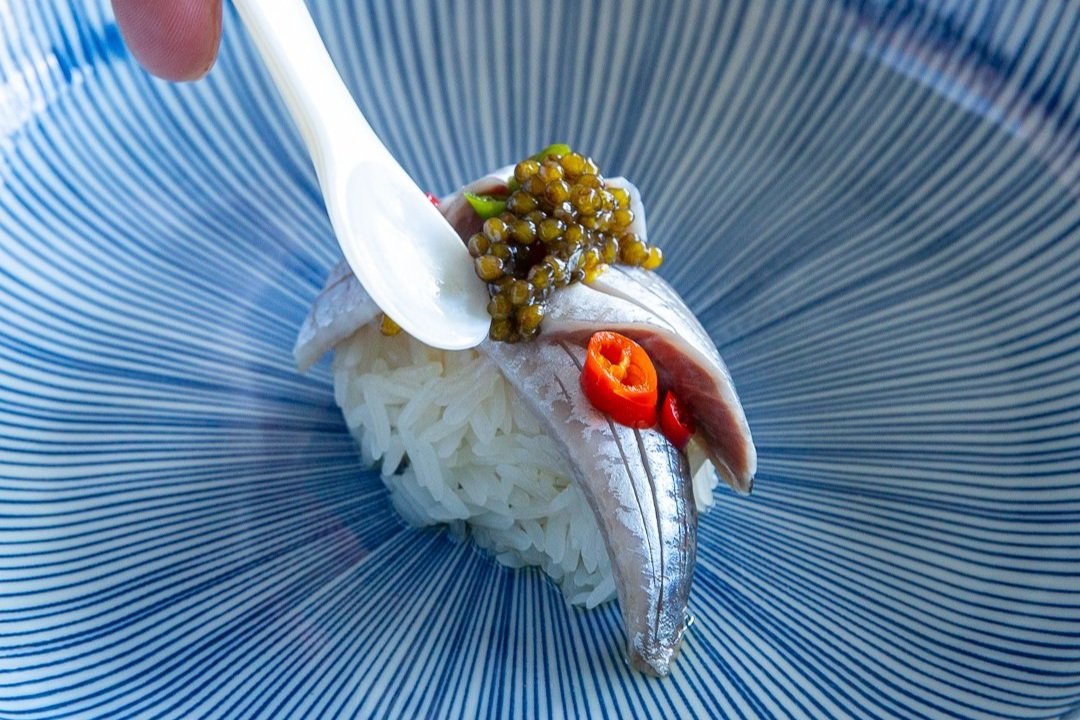How to Make a Southern-Style Thai Curry Paste to Make White People Cry
For the masochist in all of us, get thee to Fish Cheeks.
CoConut-Crab Curry
“Do you really want to hurt me? Do you really want to make me cry?” crooned Boy George in a slow reggae rhythm. Unlike bitter exes and former rock bandmates, restaurants rarely want to make anyone weep, but Thai Chef Ohm Suansilphong of Fish Cheeks does leave many of his guests teary-eyed. For noble reasons, of course.
At his seafood-centric restaurant in NoHo, Suansilphong draws inspiration from the vast landscape of Thai cuisine, and for chile-laden dishes like coconut crab curry and grilled branzino, Southern Thailand is his muse.
There’s is a big difference between normal Thai spicy—like that from larb, a northeastern Thai specialty, which gains heat from bird’s eye chiles and chile powder—and southern Thai spicy. Coastal Southern Thailand shares a border with Malaysia, and as a result, Malay influence permeates kitchens and tables. “The spice and the flavor are a lot more in your face,” says Suansilphong. The leading star of all the spices? Turmeric.
Aesthetically, turmeric gives the curries a warm yellowish hue akin to a Buddhist monk’s robe. On the palate, though, it is a mere soldier in an army of ingredients behind the complex, intense flavors. Suansilphong combines fresh turmeric with galangal, fresh red chiles, two types of dried red chiles (“They provide different nuances to the end product,” he says), fingerroot, lemongrass, and garlic. It’s a common roster for most Thai curry pastes, but making it the right way requires more than just dumping everything into a Robot Coupe.
Thai food purists do not believe in food processors. Suansilphong, a David Thompson protégé, makes his curry pastes daily with a mortar and pestle—a rigid praxis he adopted from his years working at Nahm in Bangkok. First, chiles are pounded into a coarse paste; then each ingredient is added one by one and pounded into the paste before the next is added.
The end result is a beautifully blended curry paste that's hauntingly spicy and versatile. “For the crab curry, a touch of tamarind changes the character,” says Suansilphong. He keeps the curry on the drier side, only mixing it with coconut cream to create a thick curried crust for the grilled branzino.
“Some dishes just don’t taste as good if they aren’t spicy,” he says. For Southern-style Thai curries, spicy is not just a matter of preference. It is le raison d’être. “We had a few fusses here and there, but our regulars come back again and again.”





